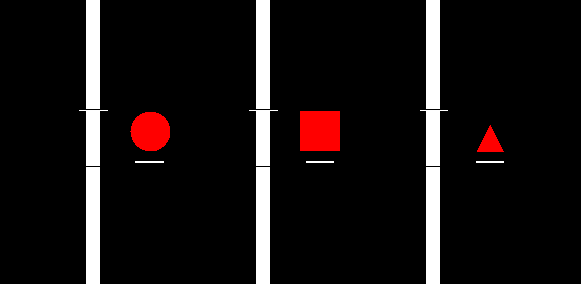Regular Signals are the essentially traffic lights which keep the trains apart, and indicate whether the path ahead is laid in and secured. The are commonly referred as “home” or “starter“ signals. Other names may be used like “interlocking” or “block” signals, based on what operational function they are dedicated to perform.
CTC supports two routing types, the regular train routing for traffic between stations including entering or leaving them, and switch routing for any shunting operation that stays within the boundary of a station. Signals can be dedicated to either routing type or both.

Regular home signal types, shown here in orientation “down to up”, from left to right: “Regular” (or “Train”), “Combination” (handling both train and switching routes) and “Switching only”. The white thin line indicates the direction from which an approaching train would “see” the signal indications. Due to geometric constrains signals cannot be oriented to fit to a track shown as diagonal on the scene.
Train routes cover longer distances, and trains travel at higher speeds. Switch routes are much shorter. On a given track plan of a large station one can find many more switching signals than train signals. In fact, the same track can be used for several consecutive switch sections, but only one train route. A train running a regular route may therefore pass several switching only signals, which are not important for the train since it is cleared for a longer path. CTC will display switching-only signals as clear (i.e. “green”) to have a consistent, non-confusing display, if they happen to be along the path of a regular train route. It will use yellow if a signal has been cleared for switching.
For an example of proper use of these signals see here